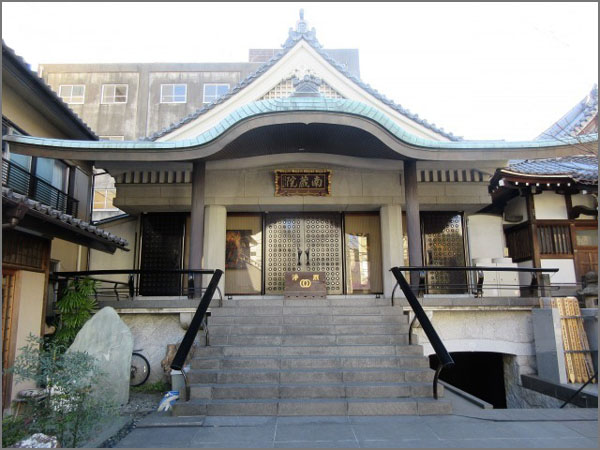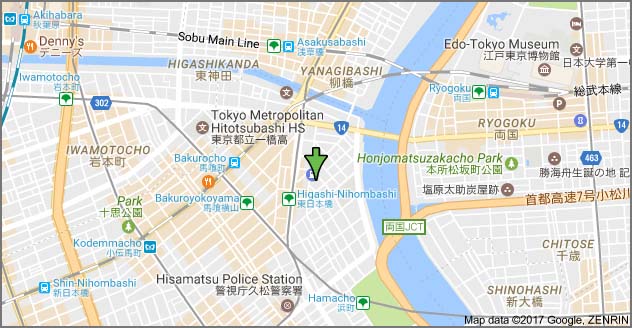- BACK to the Daruma Museum -
. ABC List of Heian Contents .
::::::::::::::::::::::::::::::
Ichijō-tennō, Ichijoo Tennoo 一条天皇 Emperor Ichijo
Emperor Ichijyo
- quote -
Emperor Ichijō 一条天皇 Ichijō-tennō,
(July 15, 980 – July 25, 1011) was the 66th emperor of Japan,
according to the traditional order of succession.

Ichijō's reign spanned the years from 986 to 1011.
Before he ascended to the Chrysanthemum Throne, his personal name (imina) was Kanehito-shinnō.
Kanehito-shinnō was the first son of Emperor En'yū and Fujiwara no Senshi, a daughter of Fujiwara no Kaneie. Since there are no documented siblings, it is supposed that he was an only child.
Ichijō had five Empresses or Imperial consorts and five Imperial sons and daughters.
His reign coincided with the culmination of Heian period culture and the apex of the power of the Fujiwara clan.
In 984,
he was appointed as crown prince under 花山天皇 Emperor Kazan. It was rumored contemporarily that his maternal grandfather Kaneie plotted to have Kazan retire from the throne.
Ichijō ascended the throne at the age of six.
.....
Ichijō had two empress consorts. First was Teishi (or Fujiwara no Sadako), a daughter of Fujiwara no Michitaka, second was Shōshi (or Akiko), a daughter of Fujiwara no Michinaga, a younger brother of Michitaka. Most people thought it impossible to have two empress consorts, but Michinaga claimed that the empress held two separate titles, Chūgū and Kōgō, which were different in principle and could therefore given to two different women.
The courts of both empresses were known as centers of culture.
Sei Shōnagon, author of The Pillow Book, was a lady in waiting to Teishi. Murasaki Shikibu was a lady in waiting to Shoshi. There were other famous poets in the courts of the empresses.
Ichijō loved literature and music.
For this reason, high ranked courtiers felt the necessity for their daughter to hold cultural salons with many skillful lady poets. Particularly he was fond of the flute. Ichijō was known for his temperate character and was beloved by his subjects.
.....
Ichijō is buried amongst the "Seven Imperial Tombs" at 竜安寺 Ryoan-ji Temple in Kyoto. The mound which commemorates the Emperor Ichijō is today named 衣笠山Kinugasa-yama. The emperor's burial place would have been quite humble in the period after Ichijo died.
.....
The years of Ichijō's reign are more specifically identified by more than one era name or nengō.
Eien 永延 (987–988)
Eiso 永祚 (988–990)
Shōryaku 正暦 (990–995)
Chōtoku 長徳 (995–999)
Chōhō 長保 (999–1004)
Kankō 寛弘 (1004–1012)
- - - More in the WIKIPEDIA !
..............................
. 瑠璃山 Rurizan 正光院 Temple Shoko-In .
港区元麻布3-2-20 / 3 Chome-2-20 Motoazabu, Minato ward, Tokyo
The main statue of this temple is
Koyasu Yakushi 子安薬師 Yakushi Nyorai to protect children
The statue was made by 恵心僧都 源信 Eshin Sozu Genshin in the middle Heian period, carved at the birth of 一条天皇 Ichijo Tenno with prayers for the baby to grow up healthy. This wooden statue was lost in WWII, the present statue is a gift from Mount Koyasan.
..............................
. Tsubosakadera 壷阪寺 .

This Temple is the sixth of 33 scared place of Kannon in the West of Japan and the principal image Juichmen Kanzeon Bosatsu (Eleven-faced Goddess of Mercy) enshrined in the Temple has been extensively worshipped as the goddess marvelously responsive to eye diseases.
Emperors Gensho, Ichijo and Kanmu and man other famous historical persons prayed for the recovery from their eye diseases.
..............................
. Kani Yakushi 蟹薬師 "Crab Yakushi" .
大寺山願興寺 Daiji San, Ganko-Ji // Mitake no Kani Yakushi 御嵩の蟹薬師
closely related to the emperor Ichijoo Tennoo 一条天皇 Ichijo Tenno, when the annual festival 蟹薬師祭礼 started.
..............................
. Shiba Daijinguu 芝大神宮 Shiba Daijingu .
Founded in 1005, by the Emperor Ichijoo Tennoo 一条天皇 Ichijo Tenno.
..............................
----- A legend about this Tenno:
He was maybe the first "pet lover" in documented history.

source : ntt-card.com/trace
He had a cat which he loved very much. One day a dog chased the cat, so he banned the dog for a while from his view. Even when the dog was allowed to come back, he was so afraid of his master that he did not eat a thing.
Therefore the Tenno pardoned him explicitly and took him in his lap again. The happy dog soon begun to eat again.
. Japanese Legends - 伝説 民話 昔話 – ABC-List .
::::::::::::::::::::::::::::::
- quote -
Emperor Ichijo 一条天皇 (Ichijou tennou)
Emperor Ichijô was an emperor of the Heian period, perhaps most well-known as being the reigning emperor during the composition of the Tale of Genji and Murasaki nikki by Murasaki Shikibu, and of The Pillow Book by Sei Shônagon. It was in Ichijô's court that much of the events related or referenced in these works took place.
A son of Emperor En'yû,
born in the Sanjô Palace and largely raised there by his grandfather Fujiwara no Kaneie, he succeeded to the throne upon the abdication of his uncle Emperor Kazan on 986/6/23. His accession ceremony was held on 7/22 that year. Ichijô's grandfather Fujiwara no Kaneie served as sesshô (regent for an emperor in his minority) from 986 until 990, and very briefly as kanpaku (regent for an adult emperor) following Ichijô's genpuku (coming of age) that year at the age of ten. Later that same year (990), Fujiwara no Michitaka took over as regent, holding the title of sesshô until 993 and then that of kanpaku until 995. Finally, Fujiwara no Michikane served as kanpaku briefly in 995.
He took Fujiwara no Akiko, a daughter of Fujiwara no Michinaga, as his First Empress; she came to be known as Empress Shôshi. In 1000, he promoted Fujiwara no Sadako, also known as Empress Teishi, to First Empress, demoting Shôshi to Second Empress and creating considerable factional tension within the palace. As Murasaki Shikibu served Shôshi and Sei Shônagon served Teishi, this event contributed to rivalries between the two women which appear in their writings.
Ichijô abdicated the throne on 1011/6/13
in favor of his cousin, a son of Emperor Reizei, who took the throne as Emperor Sanjô. Ichijô then formally took the tonsure and entered retirement on 6/19, but died several days later on 1011/6/22.
One of his sons would later succeed Emperor Sanjô as Emperor Go-Ichijô.
- source : wiki.samurai-archives.com/ -
..............................
- quote -
MUSIC AND RELIGION IN JAPAN
In the reign of the Emperor Ichijyo (r. 986–1011),
mikagura was performed in the Naishidokoro (Kashikodokoro) Palace to the accompaniment of kagurabue (a bamboo transverse flute), hichiriki (a double-reed pipe), and wagon.
- source : 2005 Thomson Gale -
..............................
. Sei Shōnagon 清少納言 Sei Shonagon .
. Murasaki Shikibu 紫式部 .
. Japanese History / The Middle Heian Period .
::::::::::::::::::::::::::::::

一条天皇 (人物叢書) bu 倉本一宏
- Reference - 一条天皇 -
- Reference - Emperor Ichijo -
Emperor Go-Ichijō was the 68th emperor of Japan
- Reference - Emperor Ichijyo -
Abeno Seimei Shrine was reportedly built by the 66th Emperor Ichijyo in 1007.
There was a very clever girl who was a daughter of Emperor Ichijyo.
Ichijyo Modoribashi
::::::::::::::::::::::::::::::
. Legends - Heian Period (794 to 1185) - Introduction .
. Japanese legends and tales 伝説 民話 昔話 - Introduction .
::::::::::::::::::::::::::::::

. Join the friends on Facebook ! .
- #ichijo #ichijotenno #ichijyo-
::::::::::::::::::::::::::::::
[ . BACK to DARUMA MUSEUM TOP . ]
[ . BACK to WORLDKIGO . TOP . ]
::::::::::::::::::::::::::::::
--
Posted By Gabi Greve to Heian Period Japan on 2/18/2017 09:52:00 am













































